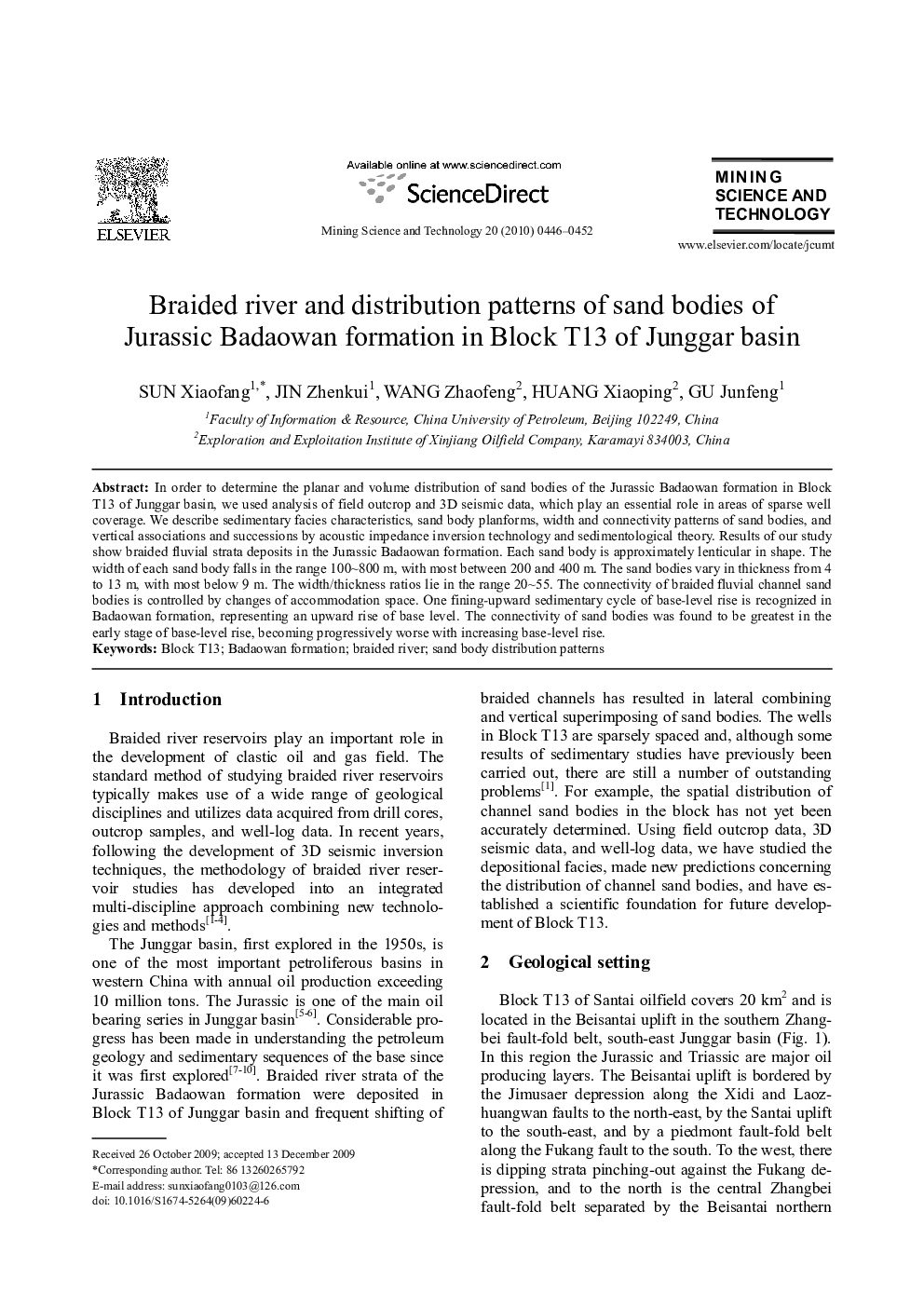| Article ID | Journal | Published Year | Pages | File Type |
|---|---|---|---|---|
| 294651 | Mining Science and Technology (China) | 2010 | 7 Pages |
In order to determine the planar and volume distribution of sand bodies of the Jurassic Badaowan formation in Block T13 of Junggar basin, we used analysis of field outcrop and 3D seismic data, which play an essential role in areas of sparse well coverage. We describe sedimentary facies characteristics, sand body planforms, width and connectivity patterns of sand bodies, and vertical associations and successions by acoustic impedance inversion technology and sedimentological theory. Results of our study show braided fluvial strata deposits in the Jurassic Badaowan formation. Each sand body is approximately lenticular in shape. The width of each sand body falls in the range 100∼800 m, with most between 200 and 400 m. The sand bodies vary in thickness from 4 to 13 m, with most below 9 m. The width/thickness ratios lie in the range 20∼55. The connectivity of braided fluvial channel sand bodies is controlled by changes of accommodation space. One fining-upward sedimentary cycle of base-level rise is recognized in Badaowan formation, representing an upward rise of base level. The connectivity of sand bodies was found to be greatest in the early stage of base-level rise, becoming progressively worse with increasing base-level rise.
